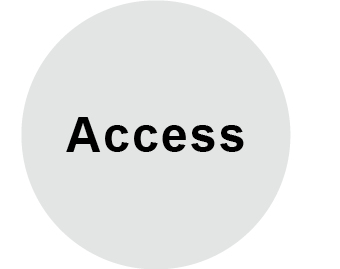We offer workshops that help you and your company to generate innovative product ideas.
Analogies
One of many ways to search for an idea for a product or a solution to a problem is to use analogies. In this approach, knowledge is transferred from an existing area to a new one. Through the targeted knowledge transfer of existing patterns innovative solutions can be generated. The biggest challenge is identifying relationships between areas that are not normally related.
Thinking process / Design process
Our thinking process is based on analogies. All information we perceive, we constantly compare with categories that we have created so far. Our brain searches for analogous features in a fraction of a second. This ability helps us to quickly understand, act, and find solutions to synchronous problems in our everyday lives. Once understood how the process works, it can be applied to the design process and be used to find innovative ideas.
Thy key to analogies: The change of perspective
A term or thing can be part of several categories that are often very far apart and at first glance have nothing in common. The categorization depends heavily on the context in which we use it. There are more typical and less typical categories that dominate in our consciousness. A chair we assign primarily to the category "seating". But we are able to move it to another category. If we put our clothes on it in the evening, it becomes the "dumb servant", if we want to replace a light bulb, it becomes a "ladder", if children stretch a cloth over two chairs, it becomes a "tent pole", if we put something on it, it becomes a "shelf", it can become an "exhibit" in a museum, or even "firewood" at some point. Without thinking about it, we shift objects from one category to another, depending on the perspective we look at it. This unconscious change of category can, if used deliberately, serve to find analog solutions and ideas.
Access, Code, Search, Mark
There are many existing solutions to an idea, that are already present in an analogous situation somewhere else. These Ideas must be found and be removed from their original situation and transferred to the new product. With the following method, the finding of analogous ideas can be specifically improved. The first step is to define a slogan that describes the basic idea, a problem or difficulty that lead to requirements that would realize the idea or solve the problem. Requirements serve as an "access" to search analogies. In addition to these "requirements accesses" various "product identities" can help to find analogies. Accesses for "product identities can be created with questions like: what is the product?, wich category does the product belong?, wich elements make up the product? The design method than contains of these 4 steps: "Access, Code, Search, Mark". Once an analogy is found, it can be transferred and transformed to match the new product typology.
The desired properties, previously derived from the problem, now serve as an access to find analogies. Identities of the product can help to create additional accesses.
Each access carries the code of the category to which it belongs. The code describes the heart of the matter and helps to find other members of this category.
The code helps to gather members of the category. Through words and pictures, analogous concepts, functions and characteristics can be searched.
A found "category member" can now be marked, and used as an access to a new category. In this way, new fields of knowledge can be opened up piece by piece.
The method is based on the books and knowledge of:
Hofstadter, Douglas; Sander, Emmanuel - Die Analogie - Das Herz des Denkens, Stuttgart: Klett-Cotta GmbH, 2001.
Kalogerakis, Katharina - Innovative Analogien in der Praxis der Produktentwicklung. Wiesbaden: Gabler Verlag, Springer Fachmedien GmbH, 2010.
Process example - The very last cd-player
The cd as we knew it disappears, but we still have some old ones with movies, music and data we want to keep. Each of these "data areas" requires a cd player in a different context - at the tv, at the stereo system, at the pc, with and without a remote control.
The question/slogan for the design process can be as follows: "What could a cd player look like that is not be used often, but should work optimally in three different contexts and be easily stowed away in the time it is not needed?
The finished product is a good example to illustrate working with analogies. A product can be based on a single analogy or, as in this example, composed of several analogous ideas:
#1 Upright orientation - The device has a vertical orientation, such as an external hard drive. Since the cd player is not constantly needed, it takes up little space when not in use
#3 Coin Slot - Modern data cd players do without a physical button for ejecting the cd. Especially on the computer, one often looks in vain for how to eject the cd via the software. Since the product is used only in a few cases, the main interaction should be as simple as possible. If you throw in a coin at the ticket machine, there is a visible button just below the coin slot for ejecting the coin.
#2 Handles - Indicate that the product can be moved. The use in different places is underlined.
#4 Charging Cradle - If the cd player is used on the TV, a remote control is required. In order for this not to be searched, a fixed place is integrated for it. Like a phone and a charging cradle, the remote has a fixed position. When not in use, the remote control becomes a kind of lid.













